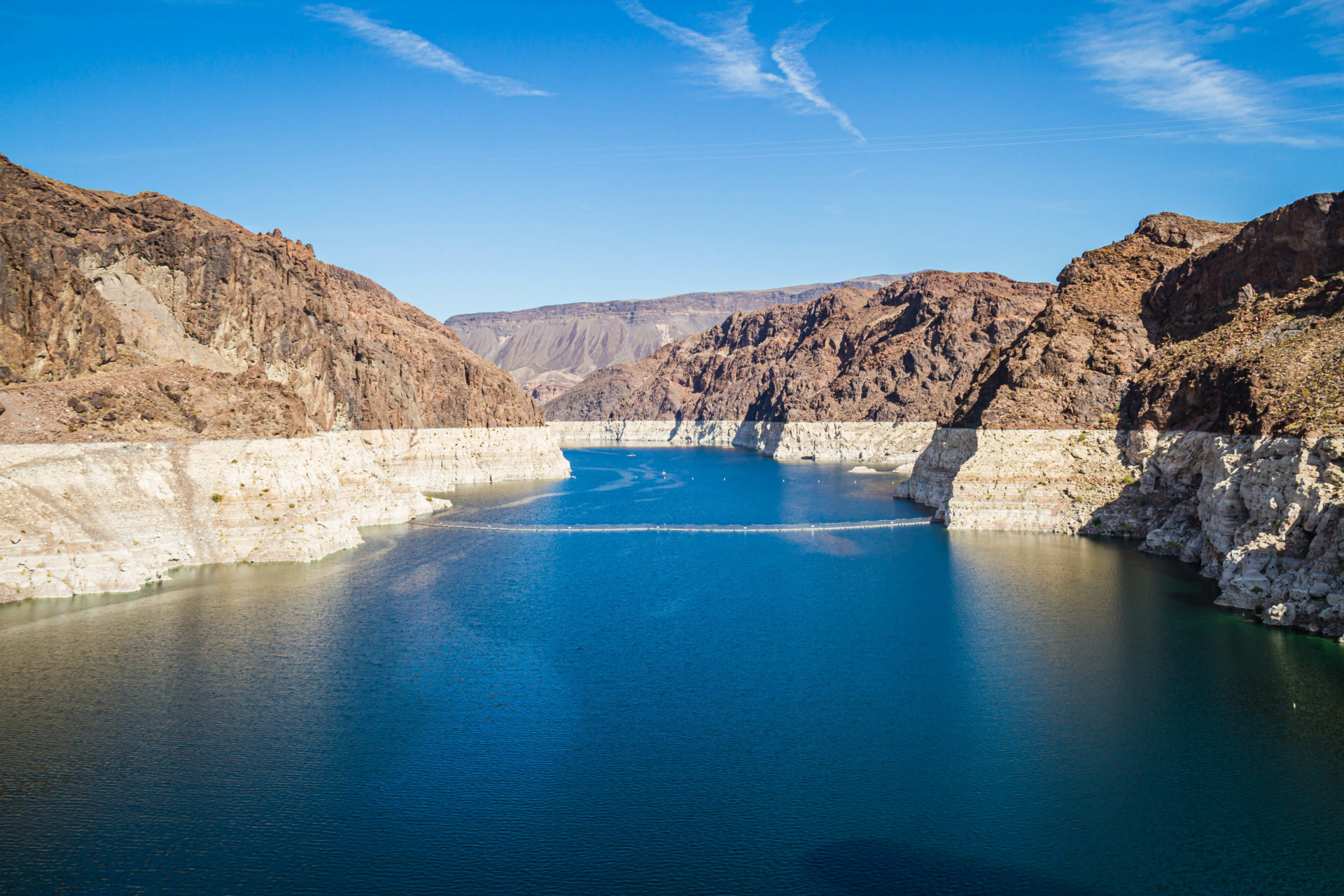We’re All in the Storm, but We’re Not in the Same Boat: U.S. Climate Gap Widens as Population Grows
Written by Alex Casey, Communications Fellow | Published: August 31, 2021
Climate change is creating water crises at both ends of the spectrum in the United States, from extreme drought to extreme flooding.
Lake Mead, the largest national reservoir in terms of water capacity, currently sits 200 feet below its usual water level. When the lake falls by about 35 more feet — projected to happen by July 2023 — the seven states that draw water from its tributaries, including, most importantly, the Colorado River, will face drastic cuts to their allocated water shares. Forty million people in the southwestern United States, including members of 29 Indigenous tribes, rely on Lake Mead and the Colorado River for drinking water. A century of shortsighted and often corrupt agreements between the U.S. and Mexico — and a population dependent on its flow that has grown by 15 million people in the past 30 years — have reduced the flow of the Colorado River beyond our southern border to a trickle.
On the other side of the country, Atlantic states are facing a 60% chance of an “above-normal” hurricane season. Last weekend, New York City experienced its rainiest hour on record during Tropical Storm Henri. In a single day, the city was deluded with the level of precipitation it typically receives over the course of two months — 42 billion gallons of water, or the precipitation equivalent of nine feet of snow. That same day, catastrophic flash floods killed 22 people in Tennessee, with 50 more people still missing. Days later, Tropical Storm Ida ravaged coastal Louisiana, with some areas receiving up to 15 inches of rain.
For those experiencing this range of water crises, climate adaptation is not a theoretical idea. It’s an act of everyday survival that includes taking shorter showers, letting lawns die, rebuilding homes, boiling drinking water, pumping basements, and filing insurance claims. For many, adaptation means staying and weathering the storm. For the privileged, adaptation means relocating — finding new places to resume old patterns, finding the places where climate impacts show a gentler hand.
There are also some who choose to move into the path of disaster. Maricopa County, which includes Phoenix and its suburbs, is projected to grow from 4.5 million today to 6.2 million in 2050 — a 37% increase. From 2016-2020, population increased by 4.7% in the 50 U.S. counties facing the highest heat risks, whereas the 50 counties facing the lowest heat risks saw an average population decline of 1.4%.
Palm Springs, California, is known to many as a lush oasis in the desert, thanks to the large aquifer beneath the town and the 123-mile Coachella Canal that imports water from the Colorado River. Forest green golf courses, a thriving arts and food scene, and, of course, ample sunshine are just a few of its draws. There’s another world right next door, however — one that is a lot less green and a lot less comfortable. Marginalized communities — hospitality and domestic workers who keep Palm Springs running and agricultural workers who keep the rest of the country fed — have been pushed to the town’s hotter fringes — where temperatures are, on average, six to seven degrees higher. These areas are also closer to the Salton Sea, which has receded so much that its banks release toxic dust riddled with DDT, arsenic, and lead on windy days. Thermal is one of these communities. Located 30 minutes southeast of Palm Springs, the town’s luxury club hosts multi-million dollar vacation homes and a race track. Just a few miles away, the community’s full time residents endure about 150 days a year that surpass 95 degrees. This part of the community is 99% Latinx and 78% immigrant noncitizen. Thermal’s median household income is $30,433, and most residents work in agriculture.
The climate gap is not limited to California; it’s at play throughout the entire country. Those who can pay for comforts such as central air conditioning or who can move to avoid the impacts of climate disasters will do so. But left in the wake of increasingly desertifying droughts and furious floods will be the most vulnerable, who, by no fault of their own, face diminishing water supplies and drying lands, or ample downpours and flooded homes, respectively.
As Heather McTeer Toney, environmentalist and former mayor of Greenville, Mississippi, said, “We’re all in the storm, but we’re not in the same boat. Some of us are in rowboats while others are in yachts. Some of us are sitting on aircraft carriers while others are just bobbing along on a floatie.”

